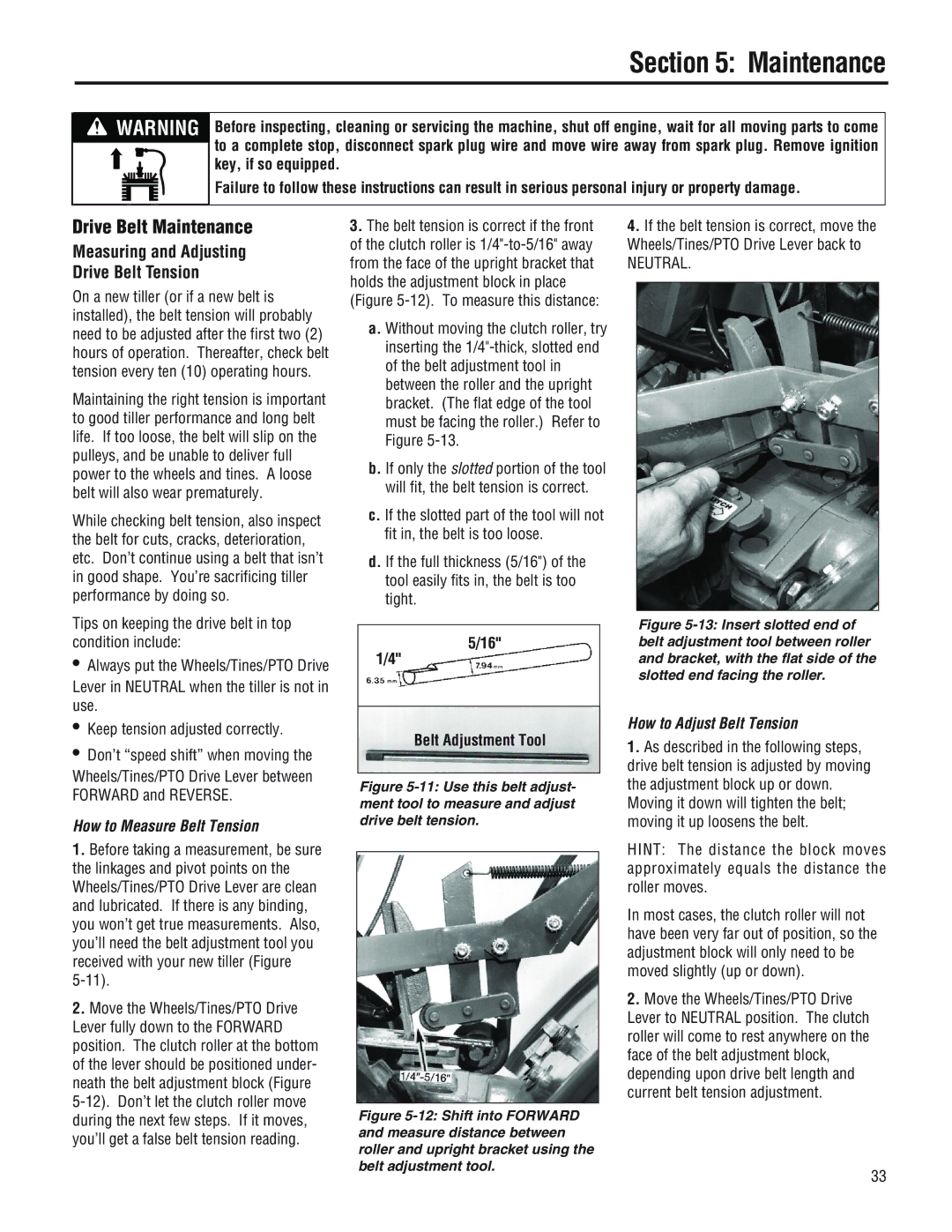E682LHorseTM, E686NHorseTM, 682JHorseTM specifications
Troy-Bilt is a recognized leader in outdoor power equipment, particularly known for its innovative and reliable garden tillers. Among its extensive lineup, the Troy-Bilt 682J Horse™, E686N Horse™, and E682L Horse™ tillers stand out for their robust performance and advanced technological features. Each model is uniquely designed to cater to different gardening needs, making them essential tools for both novice and experienced gardeners.The Troy-Bilt 682J Horse™ is a commercial-grade tiller that boasts a powerful 6 HP engine, providing ample torque for breaking new ground or cultivating soil. Its 12-inch steel tines are designed for durability and efficiency, allowing for effective tilling at a depth of up to 8 inches. The unique counter-rotating tine feature enhances soil mixing and reduces the risk of soil compaction, ensuring optimal planting conditions. Additionally, the rear-wheel drive system offers superior traction and maneuverability, making it easier to navigate through tough terrain.
Next in line, the E686N Horse™ brings a slightly different set of capabilities, with an emphasis on user comfort and ease of operation. This model is equipped with a powerful 6.5 HP engine, which allows for efficient handling of larger plots. Its forward and reverse gear options provide flexibility in operations, especially when navigating tight spaces. The adjustable tilling width allows users to choose between 16 and 12 inches, making it versatile for various gardening tasks. This model also features an ergonomic design that includes adjustable handlebars, making it easier for users of different heights to operate comfortably.
Finally, the E682L Horse™ is designed for lighter gardening tasks. With a more compact design, this tiller features a 5 HP engine that delivers reliable performance for small to medium gardens. Its tilling depth of up to 6 inches and width of 18 inches makes it ideal for homeowners looking to maintain their garden beds or small plots. The E682L Horse™ incorporates a lightweight and easy-to-maneuver body, allowing for effortless transportation and storage.
All three tillers leverage advanced technologies such as Troy-Bilt's patented Walk Behind design, which provides optimal control and reduces fatigue during extended use. The durability of the construction materials ensures longevity, while user-friendly features enhance the overall gardening experience. Whether you are a professional landscaper or a homeowner with a passion for gardening, the Troy-Bilt 682J Horse™, E686N Horse™, and E682L Horse™ offer tailored solutions that meet a wide array of tilling needs.

